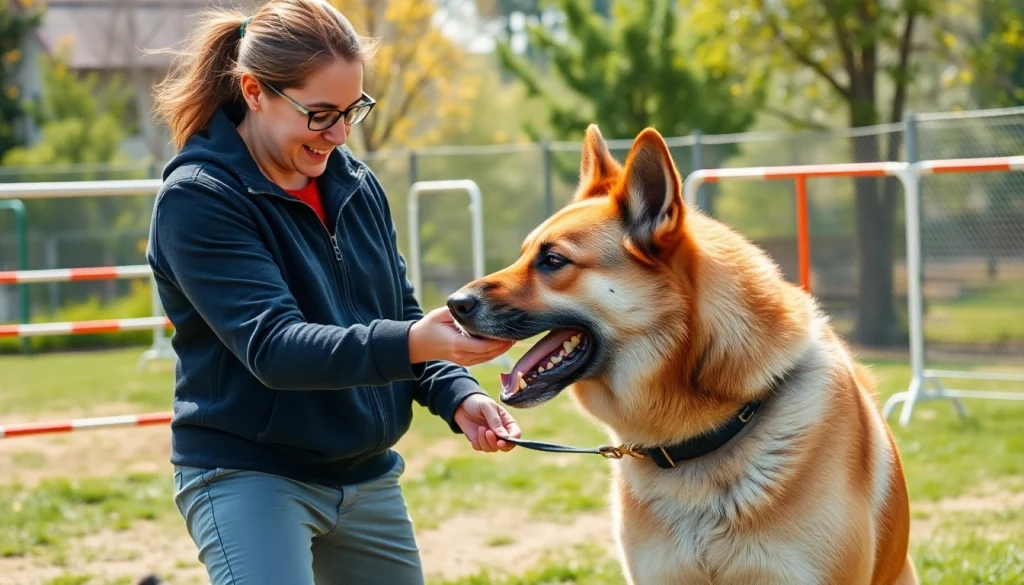
Understanding Aggressive Dog Behavior in Houston
Aggressive behavior in dogs can be a distressing challenge for many pet owners in Houston. With a diverse range of breeds and personalities, understanding why a dog exhibits aggression is vital for effective training and behavior modification. Aggressive dog training in Houston is not just about managing behavior but understanding the underlying causes of aggression. This approach fosters a healthy relationship between dogs and their owners, ensuring a better quality of life for both parties.
Common Triggers for Aggression
Understanding the factors that lead to aggressive behavior in dogs is crucial. Common triggers include:
- Fear: Fear-induced aggression is common among dogs who feel threatened by new environments, people, or other animals.
- Territorial Behavior: Dogs may become aggressive when they feel their territory is being invaded, whether that be their home or a favorite park.
- Frustration: Frustration can occur when a dog is restrained on a leash yet sees another dog or person that they want to approach.
- Socialization Issues: Lack of early socialization can lead to aggression when a dog is unable to comfortably interact with others.
Recognizing these triggers early in your dog’s life can aid in reducing or even eliminating aggressive behaviors.
The Impact of Training on Behavior Modification
Effective training can significantly change a dog’s aggressive habits. Behavioral modification strategies often involve:
- Positive Reinforcement: Rewarding desirable behaviors rather than punishing undesirable ones fosters trust and encourages positive interactions.
- Desensitization: Gradually exposing a dog to their triggers in a controlled setting can lessen their aggressive response over time.
- Counterconditioning: This involves changing a dog’s emotional response to stimuli that previously triggered aggression, leading to more positive associations.
The implementation of these methods has been shown to improve behavior and create a safer environment for both the dog and its handler.
Recognizing Aggression Signals in Dogs
Proper training begins with recognizing the signs of aggression. These include:
- Barking: While barking can be normal, excessive barking can indicate agitation or fear.
- Growling: Growling is often a warning sign that your dog is feeling threatened.
- Lunging: This is a more extreme response where a dog moves aggressively towards what they perceive as a threat.
- Body Language: Signs such as raised hackles, stiffened body, and a fixed gaze can indicate a dog that is feeling aggressive or on edge.
Being aware of these signs can help you intervene before an aggressive reaction occurs.
Top Strategies for Aggressive Dog Training
Training an aggressive dog requires patience and a well-structured approach. Below are effective strategies to help manage and potentially reduce aggressive behavior.
Positive Reinforcement Techniques
Positive reinforcement is one of the most successful methods for training dogs, especially those exhibiting aggressive behaviors. By rewarding your dog with treats, praise, or playtime when they display calm behavior, you can effectively reinforce the desired actions. Examples include:
- Offering a treat when your dog remains calm in the presence of a trigger.
- Praising your dog when they follow command in situations that usually provoke aggressive responses.
Over time, your dog will associate good behavior with positive outcomes, leading to a reduction in aggression.
Establishing a Safe Training Environment
A safe, low-stress training environment is essential for effective aggressive dog training. Steps to create this environment include:
- Choosing a quiet location for training sessions, free from distractions or potential triggers.
- Establishing a routine that allows the dog to anticipate training times and activities, leading to reduced anxiety.
- Using a controlled setting, such as a kennel or training facility, that’s designed to accommodate aggressive dogs.
Through these efforts, you can help your dog feel secure during training.
Creating Consistency in Training Methods
Consistency is key when training aggressive dogs. This involves:
- Using the same commands and rewards every time.
- Ensuring everyone in the household is on the same page with training methods.
- Adhering to a consistent schedule for training sessions.
By creating a predictable training environment, you reduce confusion for your dog and promote better learning.
Selecting the Right Trainer or Program
Choosing the right trainer or program is crucial for effective aggressive dog training. The complexity of aggression issues often requires professional guidance, especially for severe cases.
What to Look for in a Dog Trainer
When searching for a dog trainer in Houston, consider the following qualities:
- Experience with Aggression: Look for trainers who have specialized knowledge in dealing with aggressive behaviors.
- Positive Training Methods: Trainers who use positive reinforcement techniques are more likely to foster a trusting and safe environment for your dog.
- Reputable Credentials: Consider trainers certified by recognized organizations such as the Association of Professional Dog Trainers (APDT) or the International Association of Animal Behavior Consultants (IAABC).
Conducting thorough research and asking for recommendations can help ensure that you select a qualified trainer.
Considerations for Training Facility Location
The location of the training facility can impact the effectiveness of the program. Here are some factors to consider:
- Proximity to your home can make it easier to attend consistent training sessions.
- Facilities in less crowded areas may provide a more relaxed atmosphere for training.
- Look for places with ample outdoor space, especially for socialization exercises.
Accessibility and suitability of the location can enhance your training experience.
Evaluating Trainer Credentials and Experience
When assessing potential trainers, review their qualifications and experience in depth. Consider these questions:
- How long have they been training dogs, particularly those displaying aggression?
- Have they handled cases similar to yours? Ask for specific examples or case studies.
- Do they employ humane training methods, avoiding negative reinforcement or punishment?
Only proceed if you feel confident in the trainer’s ability to effectively handle and rehabilitate your aggressive dog.
Cost of Aggressive Dog Training in Houston
The costs associated with aggressive dog training can vary significantly depending on the trainer, approach, and duration of the program. Here’s a closer look at potential costs involved.
Typical Pricing Models for Training Sessions
Typically, dog training sessions are priced according to the following models:
- Hourly Rates: Many trainers charge by the hour, which can range from $75 to $200, depending on their experience and the complexity of the training.
- Package Deals: Some trainers offer discounted rates for multiple sessions, which can reduce the overall cost.
- Initial Consultation Fees: Expect to pay a fee for the initial assessment of your dog, generally between $100 and $300.
Consider that investing in training is an investment in a safer, happier life with your dog.
Comparing Local Aggressive Dog Training Options
When comparing training options, take the time to evaluate various facilities and trainers:
- Read Reviews: Look for testimonials or reviews from past clients. Websites like Yelp or Google reviews can offer insights.
- Ask for References: Don’t hesitate to request references from the trainer to speak with previous clients about their experiences.
- Visit The Facility: If possible, visit the training facility to observe methods used and the overall environment.
A thorough comparison will help you select the best training option for your needs.
Assessing Value versus Cost in Training Services
While cost is an important factor, value is equally crucial when it comes to selecting a training program. Consider the following:
- Does the trainer provide ongoing support, such as follow-up sessions or advice via phone or email?
- Are the training methods effective and humane?
- What are the long-term benefits expected from the training, such as improved behavior and a better relationship with your pet?
By weighing the value against the costs, you can make an informed decision that suits your needs.
Life After Aggressive Dog Training
The journey doesn’t end after completing an aggressive dog training program. Ongoing efforts are essential to maintain skills learned and improve behavior.
Monitoring Progress and Signs of Improvement
Once training is completed, it’s important to continue monitoring your dog’s behavior for signs of improvement or setbacks. This can include:
- Tracking interactions with triggers and noting progress in their responses.
- Keeping a diary of behavioral changes and milestones to share with your trainer if you have follow-up appointments.
Being proactive in these assessments ensures that you can address any issues promptly.
Maintaining Skills through Follow-Up Sessions
Many training programs offer follow-up sessions that are vital for reinforcing learned behaviors. Techniques include:
- Regularly scheduled refreshers on training skills.
- Discussion with your trainer about behavioral issues that may arise.
- Engagement in group training sessions to continue socialization and practice in a controlled environment.
Continual reinforcement of skills learned is the best way to ensure lasting behavioral change.
Building a Lasting Bond with Your Dog
Finally, a strong bond with your dog will help reinforce positive behavior and aid in training efforts. Building this bond can involve:
- Consistent daily activities that promote trust, such as walks, playtime, and obedience exercises.
- Engaging in new activities together, which can help improve your dog’s confidence and reduce anxiety.
- Utilizing training techniques in real-life situations to reinforce your dog’s learning.
A strong bond will not only help your dog feel more secure but will also help solidify the training achieved.



